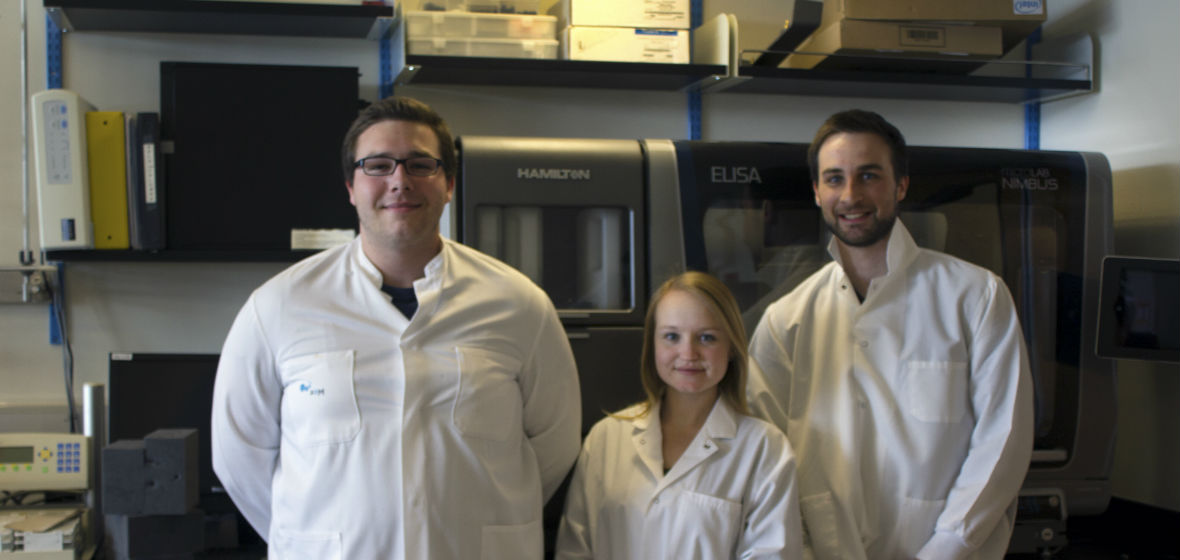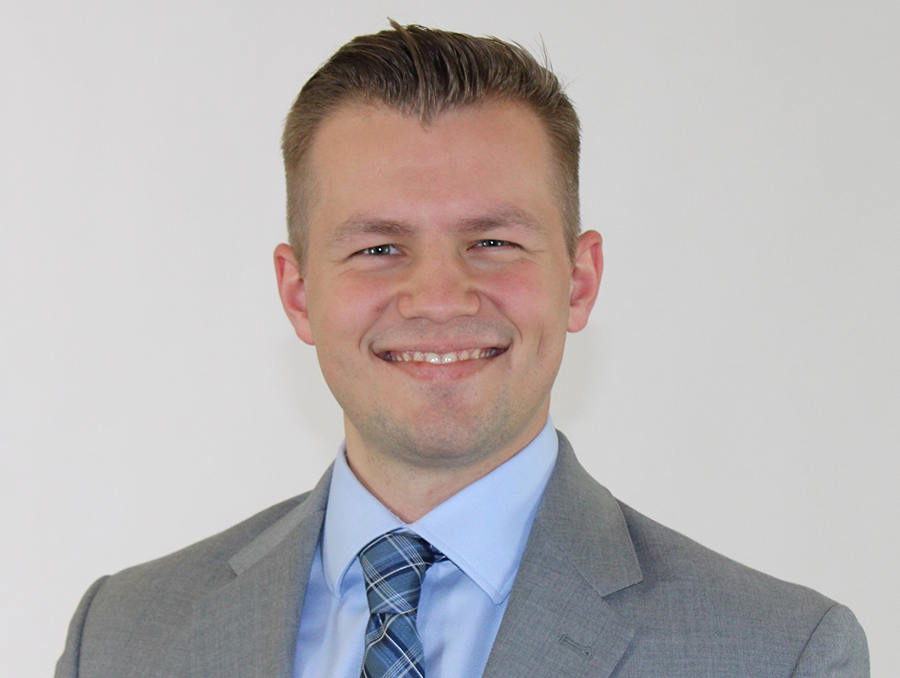Students at the University of Nevada, Reno not only get to work with the latest, advanced technology in robotics for precision liquid handling, they can participate in research that helps detect diseases. The robots are state-of-the-art automations shaped like a box, with sleek and shiny exteriors that stand out amongst the normal assortment of pipets and test tubes (or graduated cylinders) in a science lab.
The two robots in use at the University are the product of a collaboration between the College of Agriculture, Biotechnology and Natural Resources, University of Nevada Reno School of Medicine, and the Hamilton Company, a Reno-based international robotic manufacturing company. Hamilton specializes in the development, manufacturing and customization of precision measurement devices, and automated liquid handling workstations.
Students are first familiarized with the Hamilton automation in an introductory course taught by Christie Howard, associate professor in the Department of Biochemistry and Molecular Biology. These students are pursuing a combined bachelor's and master's degree in biotechnology, which takes five years. Howard has trained 80 students since 2013.
{{RelatedPrograms}}
"The idea with the University was to partner with them so that we both benefit from it," Kristina Klette, scientific leader, cellular and protein sciences scientific lead group manager at Hamilton Company, said. "For the University, obviously they are trying to educate their students and expose them to biotechnology and automation. So what we have done is train Dr. Howard on the programming of the robots, and then she conducts a class with biotechnology students to train them."
The Hamilton Company began its collaboration with the Department of Biochemistry and Molecular Biology in 2013, giving students and faculty a unique opportunity to access its state-of-the-art laboratory automation systems.
With this partnership, students are able to gain experience and exposure in a field where automation is quickly becoming a staple in labs.
"The goal is also to work with specific students, who are maybe doing a master's or a thesis for their doctorate, on a project, and that project might entail automating some parts of their processes," Klette said. "This experience is going to enable them to go out in the industry, whether it be biotech or starting their own labs; they will know how to use and have experience with automation, and that will make them competitive in the field."
The partnership with the University also allows for Hamilton to work on some of there own project's as they do not conduct biological experiments in their manufacturing facility.
"We have a few [projects] that are ongoing, one of them is colony picking, doing blue-white selection, so we are generating some applications notes doing that," Klette said. "There's another project we are working on in another University lab doing DNA methylation studies, which will also be done on one of our machines."
Rapid diagnostics for infectious diseases
David AuCoin, associate professor and chair of the Department of Molecular Microbiology and Immunology at the University of Nevada, Reno School of Medicine, uses one of the robots provided from Hamilton in a joint effort with Howard's lab. His work focuses on developing rapid diagnostics and therapeutics for infectious diseases such as Lyme disease, Ebola, Whooping Cough and other obscure bacteria only seen in certain parts of the world.
Students who train on the automation with Howard usually find themselves working in AuCoin's lab later on where they are already familiar with the machinery.
"It's a situation where we are getting more output for students, they are publishing more papers and getting better data," AuCoin said.
While the robot is beneficial to the student's own research experience, its also highly beneficial in terms of AuCoin's own research and lab interests.
"We make diagnostic tests, and how we do it is oftentimes we are looking at a patient who is infected with some bacteria or fungus," AuCoin said. "Our lab starts off by look at biomarkers, such as what does the bacteria shed during an infection that we could potentially detect. We are pretty good at identifying these targets that the bacteria make. When we do that, we are able to take that target or protein and make a lot of it in the lab. Then we will make antibodies that bind to that specific target, and then we can use them on a diagnostic test."
With the help of the Hamilton machines, AuCoin and Howard will be able to detect how much virus or bacteria a person has in them from both qualitative and quantitative approaches. The automated liquid handling functions provide a more accurate and faster turnaround time when conducting experiments, especially in relation to human virus detection. These workstations perform tasks that take hours or days and would tie up a technician's time if the technician completed the experiment by hand.
"Not only do researchers need to work on how to fight these diseases through vaccines, they also have to be able to determine how well the vaccines work," Howard said. "The use of the robot helps us run numerous experiments in order to develop methods for detecting infectious disease, and detection is an important component towards prevention methods and cures."
The University is also proud of its partnership with Hamilton and the opportunity it provides to students.
"Biotechnology students see pipetting robots in nearly every commercial biotech company that they visit," Claus Tittiger, professor and interim chair of the Department of Biochemistry and Molecular Biology, said. "Having the robots on campus is a great advantage to our department because it allows us to provide students with up to date training on state-of-the-art equipment, which makes them highly competitive for employment."












